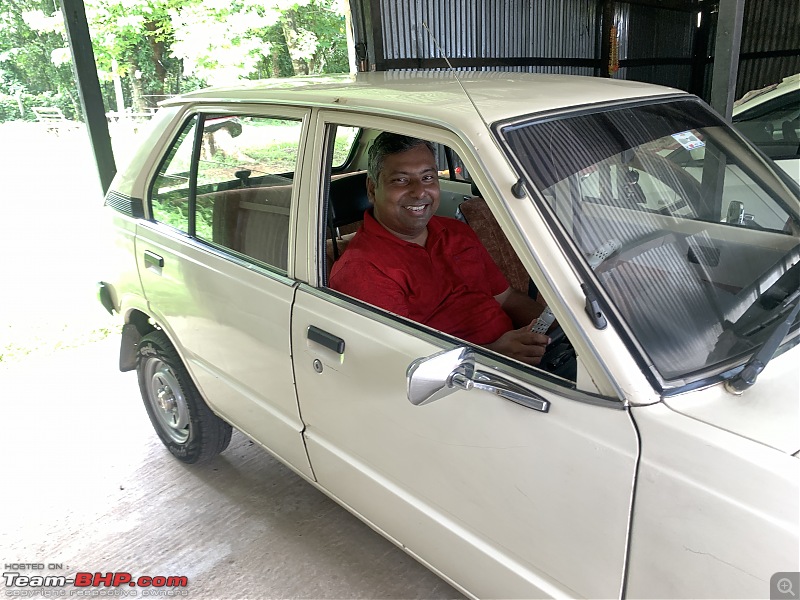A dozen of us who had bonded over motorcycles over the years, agreed to meet at Nokrek in Garo hills of Meghalaya, albeit in cars. Nokrek happens to be a UNESCO designated biosphere reserve. It’s one of the total 18 biosphere reserves in India with the likes of Nilgiri, Andaman and the Sunderbans.
For us however it was more of a meeting destination, plus an escape from the unforgiving summer in the Assamese plains below. Only recently Nokrek got its first paved road and now it is barely 2.5 - 3 hours from home, making it a sweet short drive, what once used to be an off-road route.
And yet it is only now that I am looking up Nokrek on Google and trying to figure out what being a UNESCO biosphere reserve comes to mean. Interesting stuff and a must read. I am now hoping to see more of the biosphere reserves starting with the Sunderbans. But enough of that wish-list that only keeps growing longer by the day.
At around midday both the cars arrived at my hometown of Dudhnoi from Guwahati and were now stocking up from the market, for the evening ahead. At 1 pm I left home with odo reading at 54204 kms. Being the slower car, I went ahead, fuelled up and kept going.
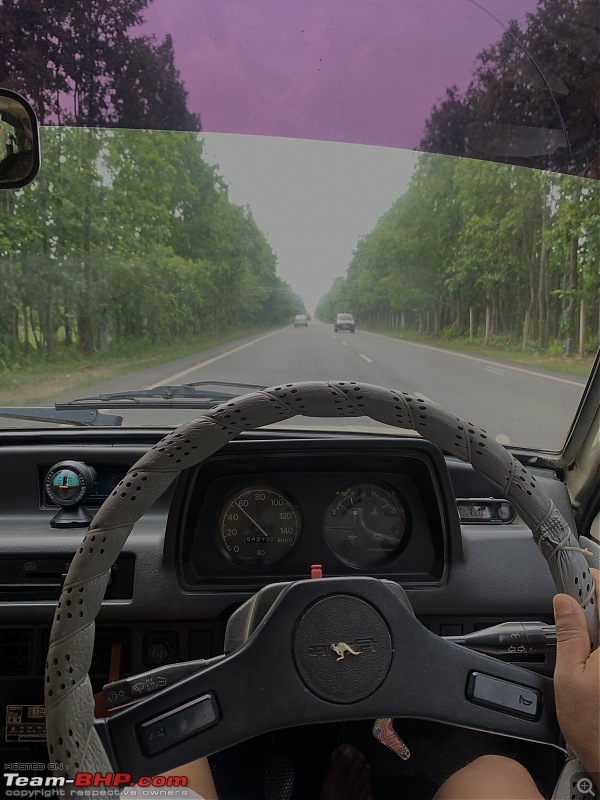 1.18 pm. NH17. The trees will be gone in a year or two, because of the ongoing highway widening project.
1.18 pm. NH17. The trees will be gone in a year or two, because of the ongoing highway widening project. 
We kept driving on the NH17 and at Paikan took a left and went over to NH217 or the Tura highway. Tura happens to be the cultural and administrative centre for the
Garos of Meghalaya, just like Shillong is for the
Khasis. The road passed through gorgeous Sal forests on either side of this breathtaking highway i.e. NH217.
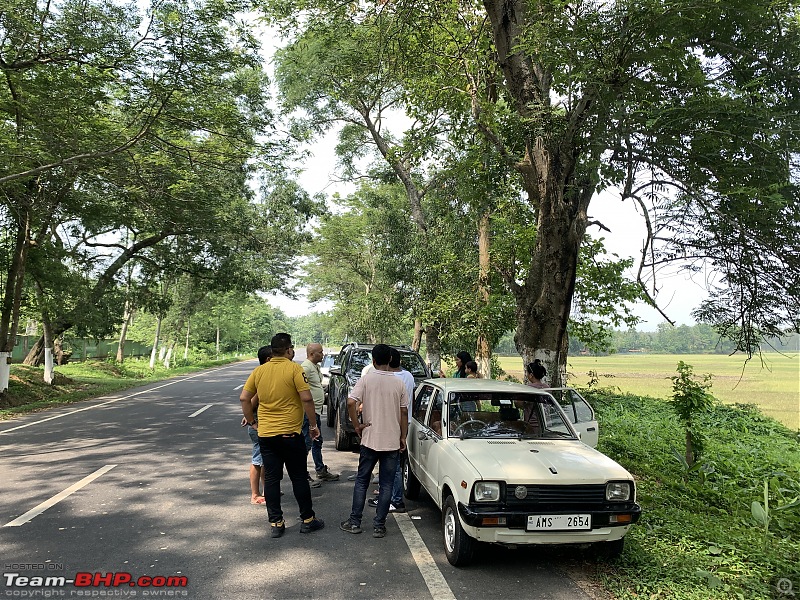 1.39 pm. First halt.
1.39 pm. First halt. 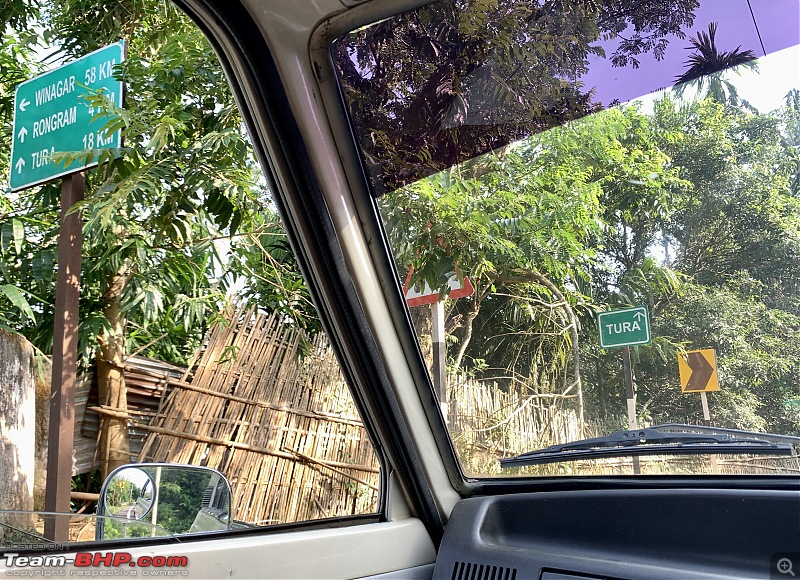 Since this route was new and unfamiliar to many, we had to frequently regroup before moving on. With time on our side, we enjoyed these stoppages.
Since this route was new and unfamiliar to many, we had to frequently regroup before moving on. With time on our side, we enjoyed these stoppages. 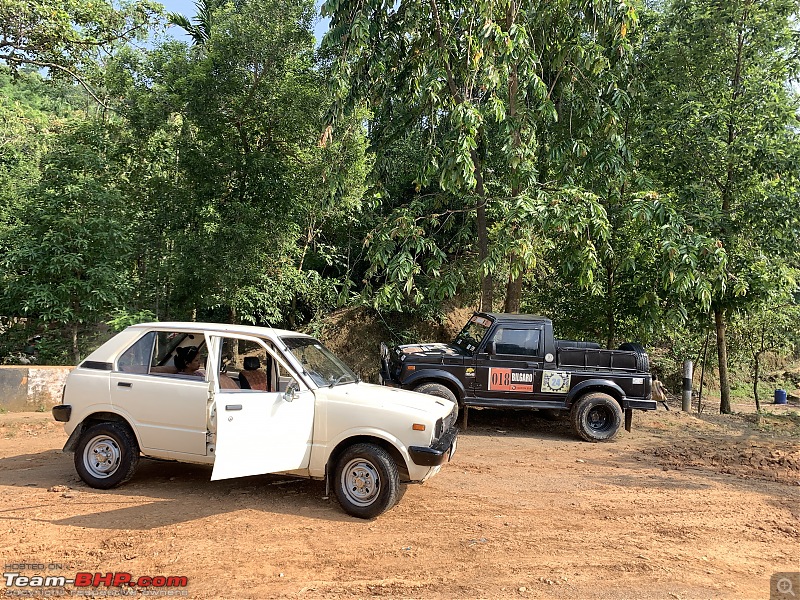 This part of Meghalaya (Garo hills), boasts of a vibrant car mod and motorsport scene, albeit unflashy compared to the craze in the Khasi hills.
This part of Meghalaya (Garo hills), boasts of a vibrant car mod and motorsport scene, albeit unflashy compared to the craze in the Khasi hills. 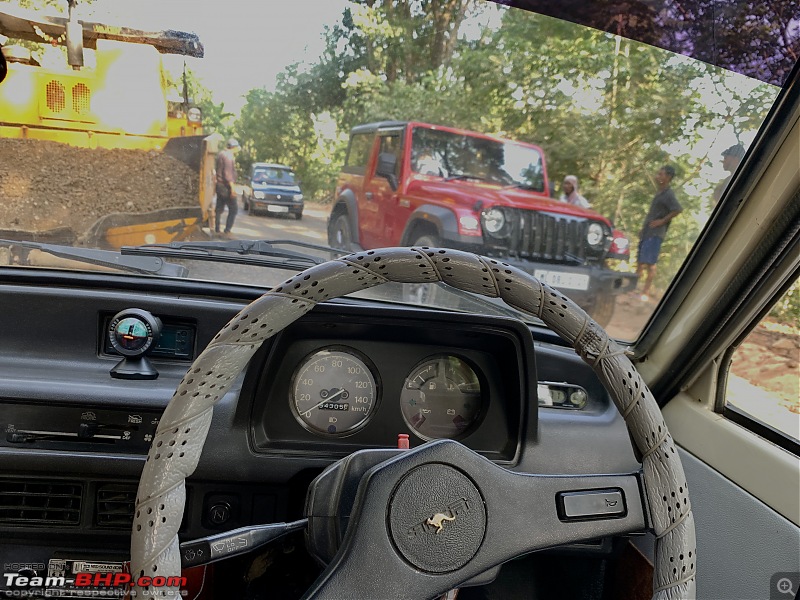 Just before Tura we veered off the highway and took the broken old highway leading to William Nagar which is yet another old town in the Garo hills of Meghalaya.
Just before Tura we veered off the highway and took the broken old highway leading to William Nagar which is yet another old town in the Garo hills of Meghalaya.
While this old highway is undergoing road construction work, the narrow village road leading to Nokrek is completely paved now and makes for a scenic drive. The sun was about to set and the temperature was dropping as we kept moving.
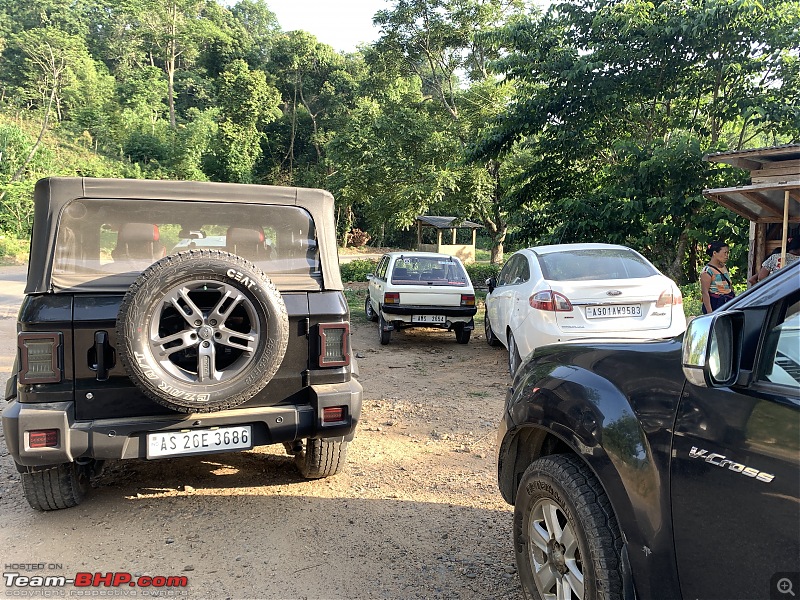 5 pm. Tea break.
5 pm. Tea break. 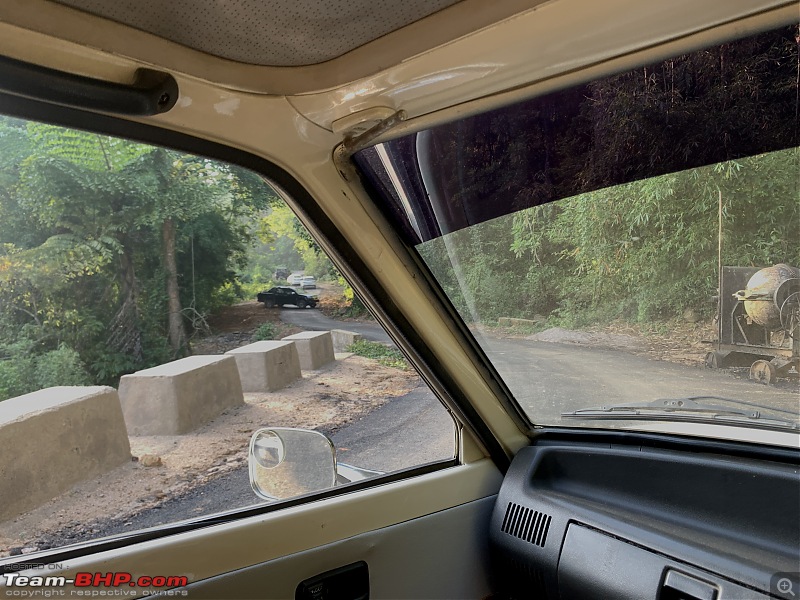 One of the several u-turns that we did, before finally reaching our destination.
One of the several u-turns that we did, before finally reaching our destination.
The paved road rose rapidly now and temperature turned from hot to pleasant to cool in no time. 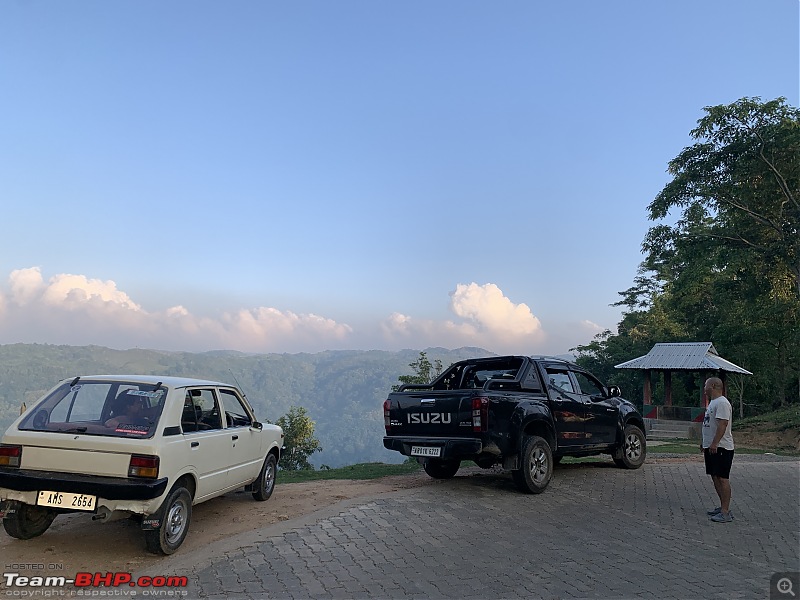 A photo op as we approach the Nokrek Biosphere reserve.
A photo op as we approach the Nokrek Biosphere reserve. 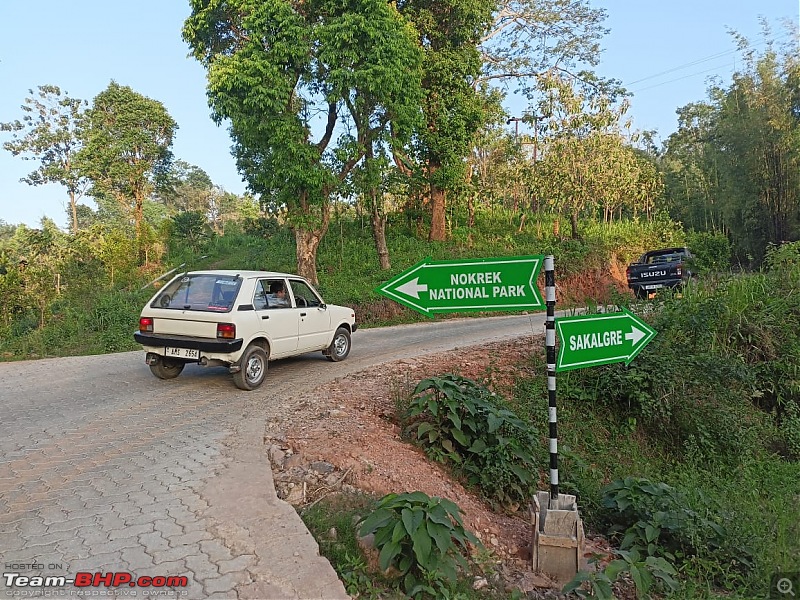
The road leading to Nokrek.
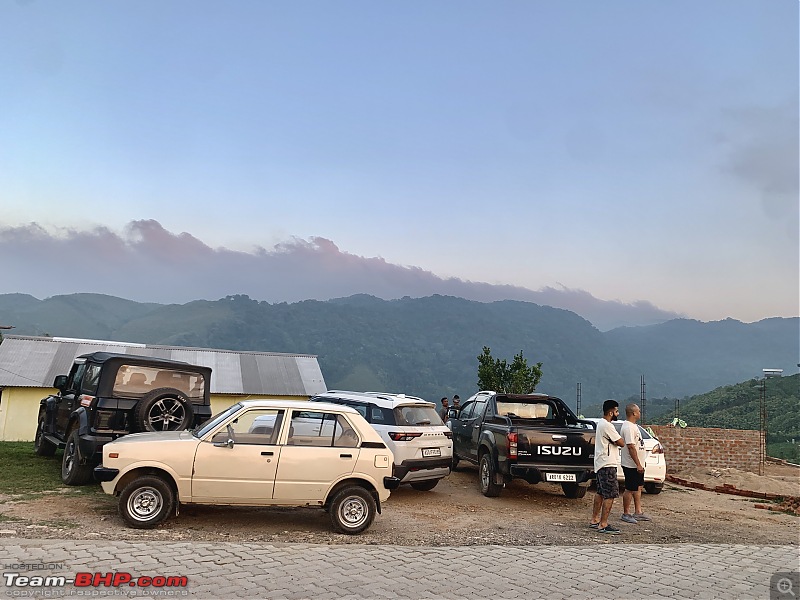 6 pm. Reached our destination i.e. Daribok village in the Nokrek Biosphere reserve.
6 pm. Reached our destination i.e. Daribok village in the Nokrek Biosphere reserve. 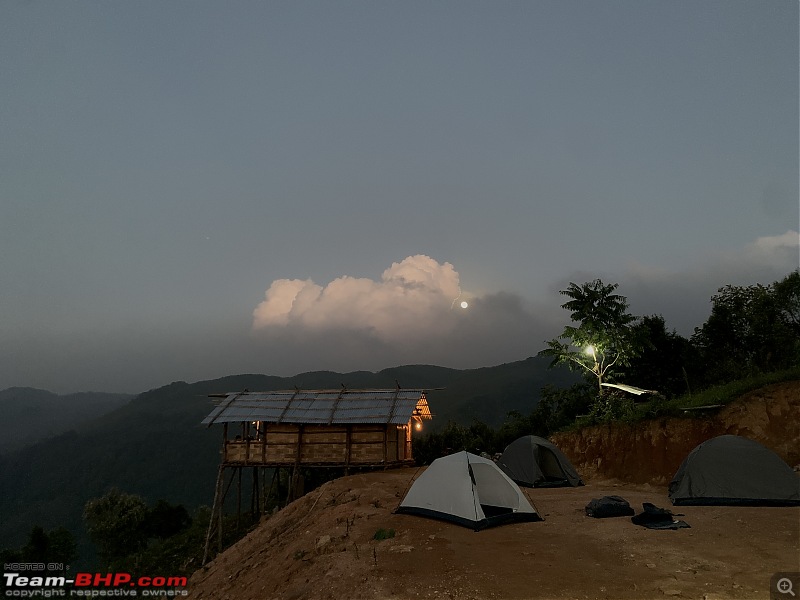 The two families in the team, including mine, were allotted this little bamboo hut on stilts.
The two families in the team, including mine, were allotted this little bamboo hut on stilts. 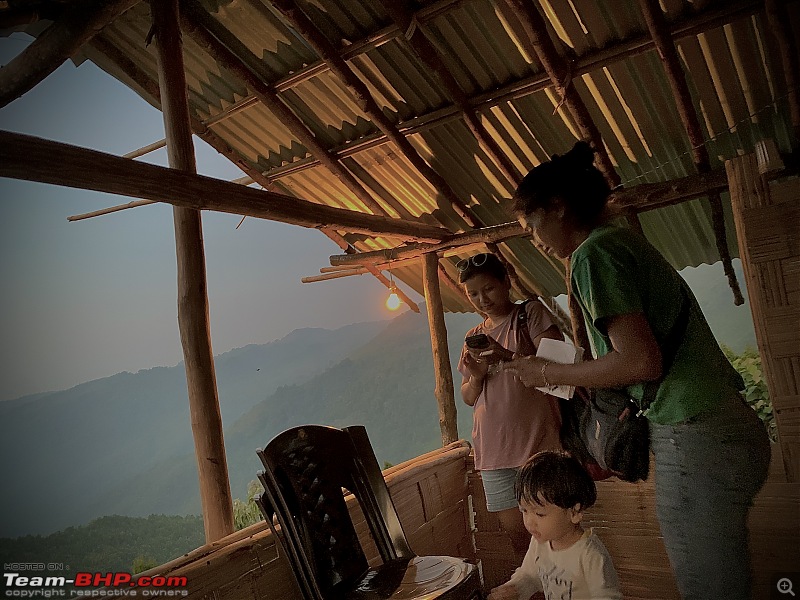 6.30 pm. View from the hut.
6.30 pm. View from the hut.
A powerful storm smashed Daribok at night, blinding lightnings and hard hitting rain. That night I felt very close to being in an oceanic storm, stranded in a bamboo raft. Morning we woke up to a glorious sunrise no less. The constant sound of nature is now punctuated by the cacophony of the Western Hoolock gibbons which is common in Nokrek.
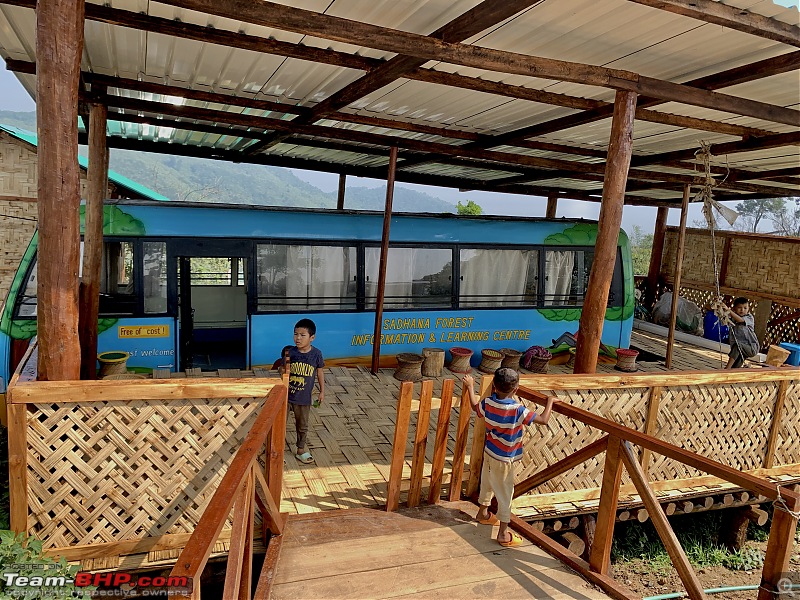 A welcome sight of a bus turned into a home/training center. A team from Kerala is currently stationed here. Being a UNESCO designated Biosphere reserve, there is clearly work going on to empower local communities to balance progress with conservation, something that’s clearly missing in our times.
A welcome sight of a bus turned into a home/training center. A team from Kerala is currently stationed here. Being a UNESCO designated Biosphere reserve, there is clearly work going on to empower local communities to balance progress with conservation, something that’s clearly missing in our times. 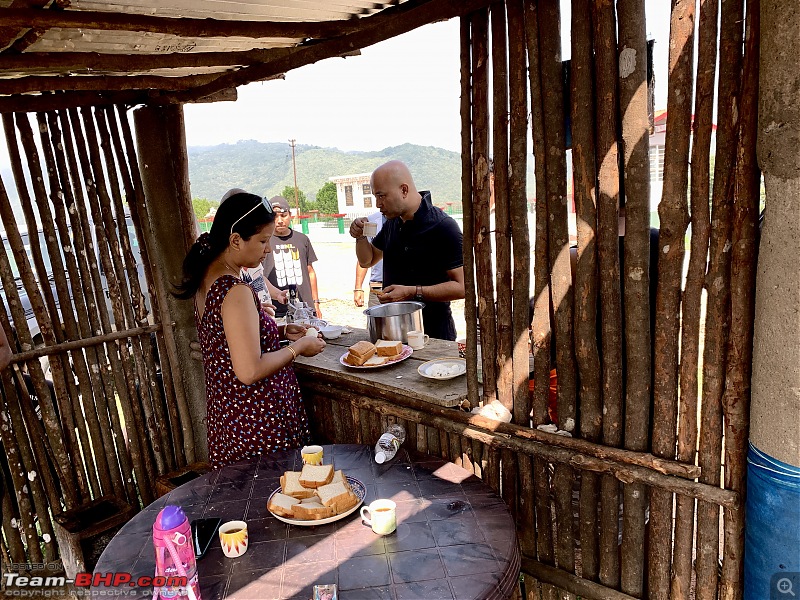 8.45 am. Breakfast time.
8.45 am. Breakfast time. 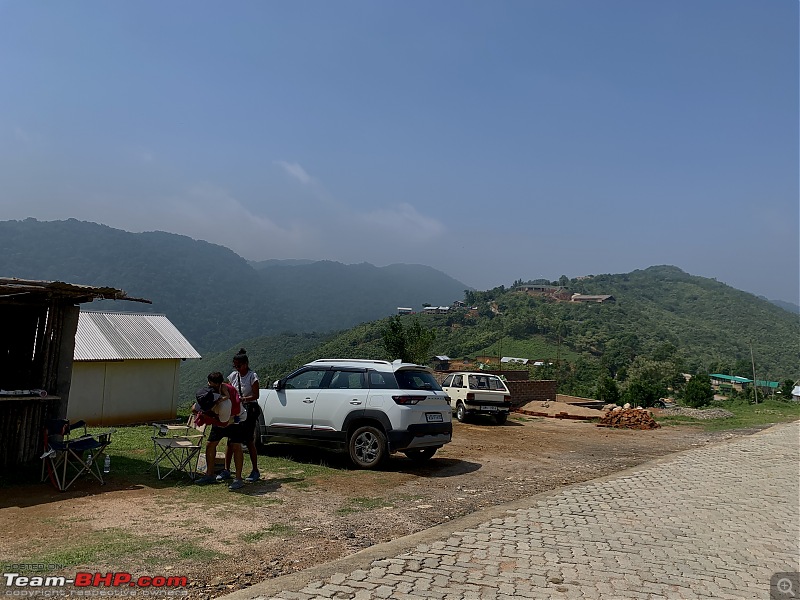 After breakfast we decided to do the small trek to the river below.
After breakfast we decided to do the small trek to the river below. 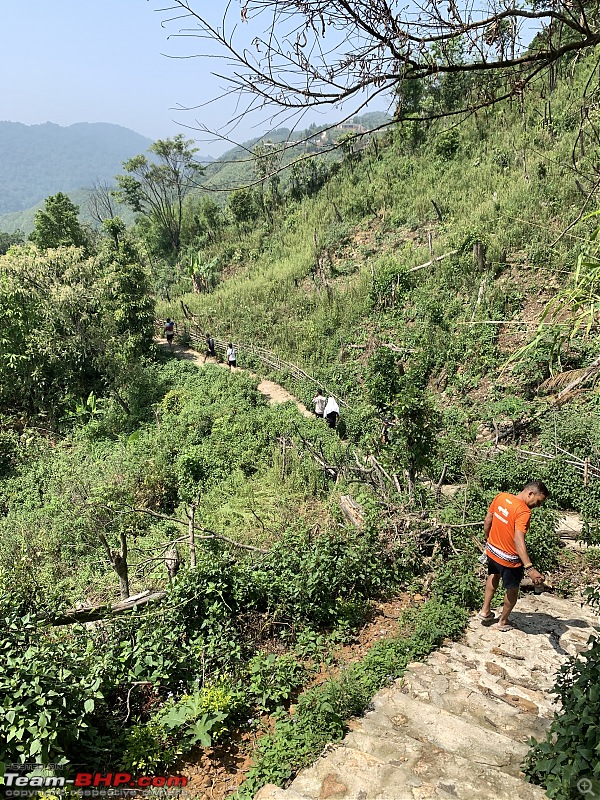
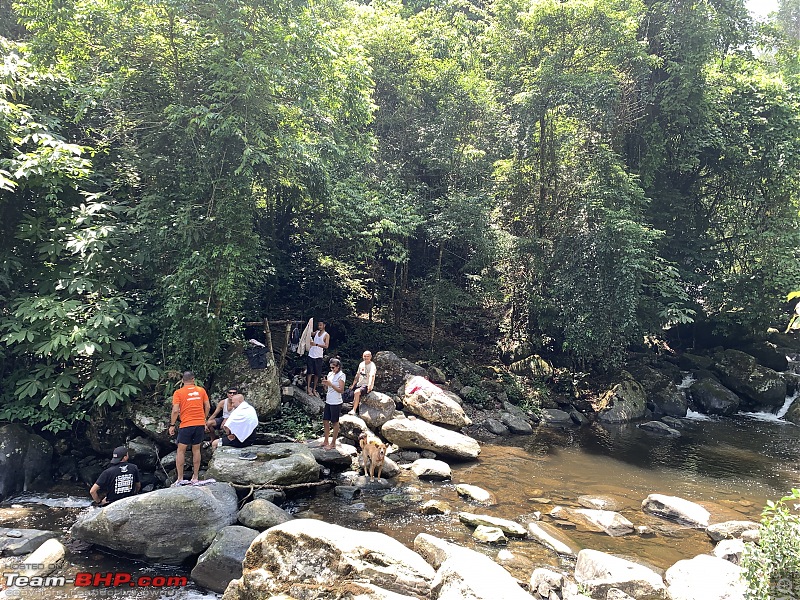 Took us approximately 30 minutes to reach the Simsang Dare.
Took us approximately 30 minutes to reach the Simsang Dare. 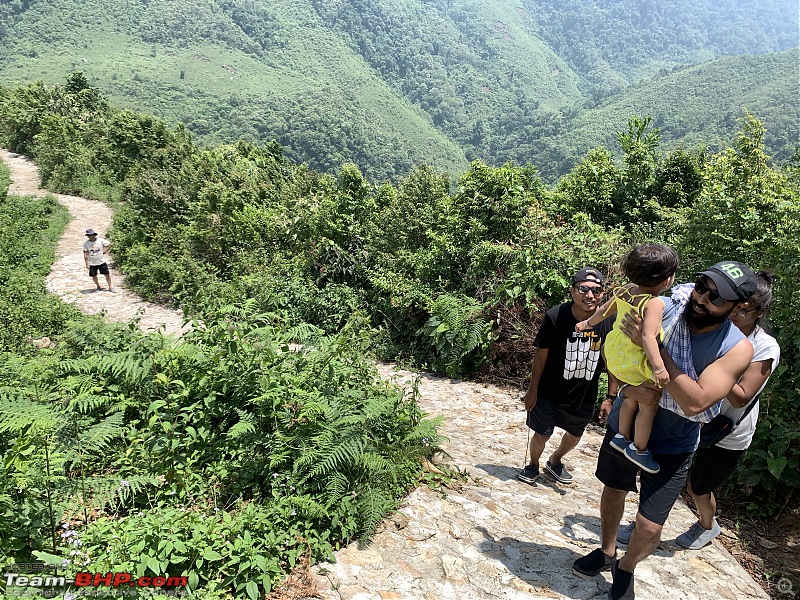
 The uphill trek on our return journey
The uphill trek on our return journey  Some took a shortcut, while we continued on the longer route.
Some took a shortcut, while we continued on the longer route. 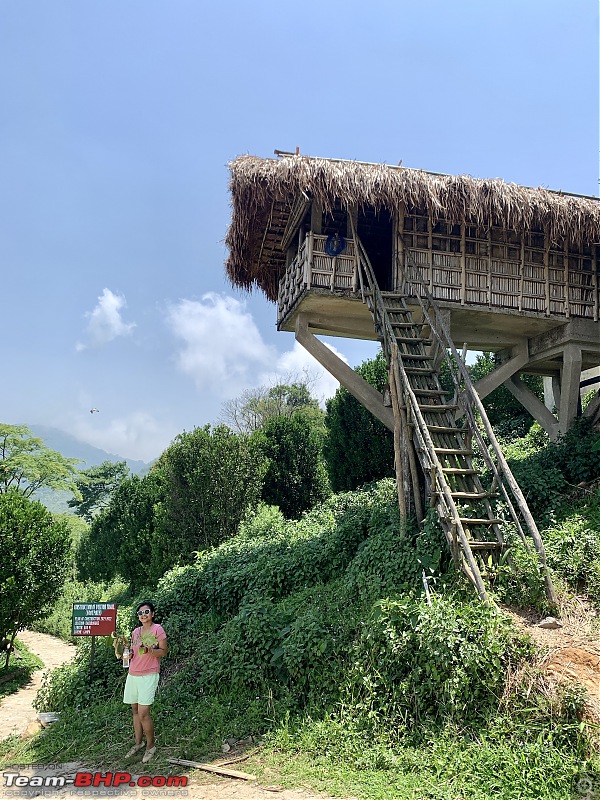 My botanist wife
My botanist wife  Team photo. All members of Bulls of Assam mc
Team photo. All members of Bulls of Assam mc
We had a quick lunch and checked out from our hut. We couldn’t leave earlier as it’s Sunday and the village gate remains closed during Church hours between 9 am to 1 pm. People who had work had left before 9. As for the rest of us, we decided to take a different route instead of going back to NH217. We continued on the old William nagar highway.
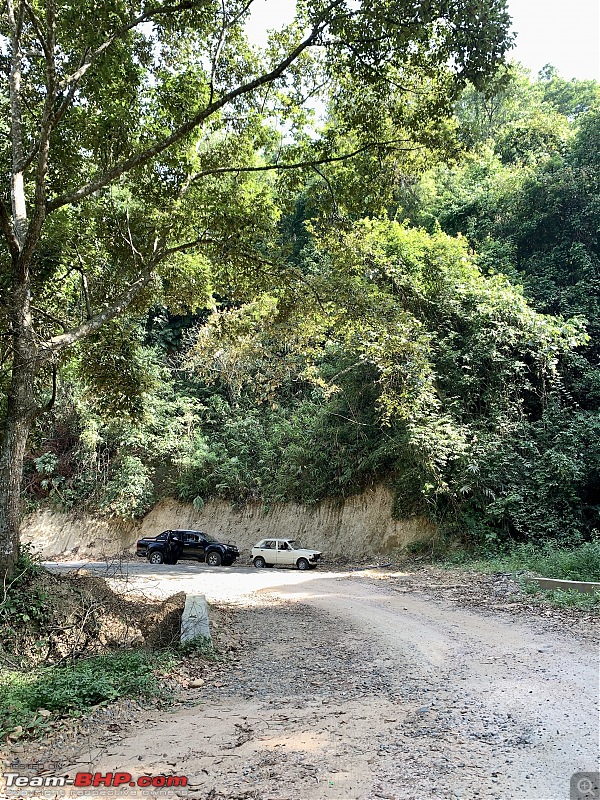 Size difference between the Isuzu and the SS80.
Size difference between the Isuzu and the SS80. 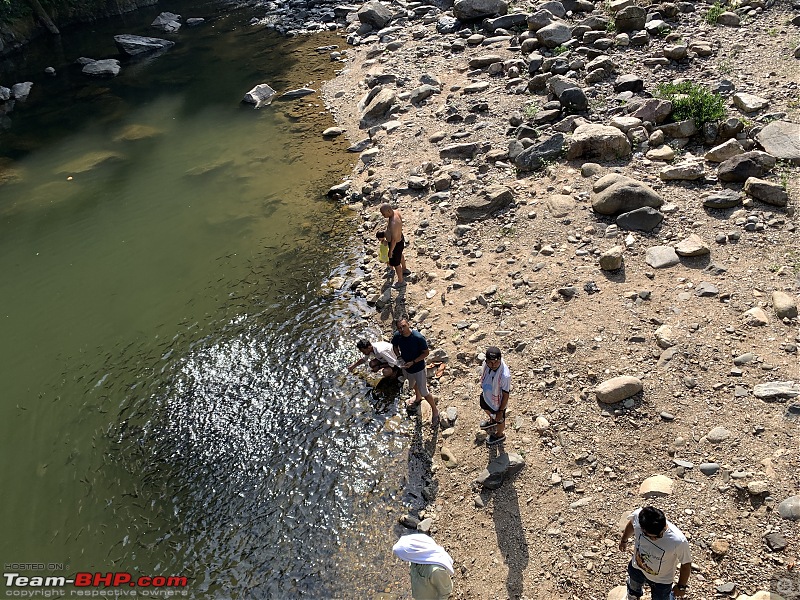 Our next stoppage was Rombagre, which has a fish sanctuary. Some fed puffed rice to the fishes. But it was scorching hot and we got moving in no time.
Our next stoppage was Rombagre, which has a fish sanctuary. Some fed puffed rice to the fishes. But it was scorching hot and we got moving in no time.  For some respite from the heat.
For some respite from the heat. 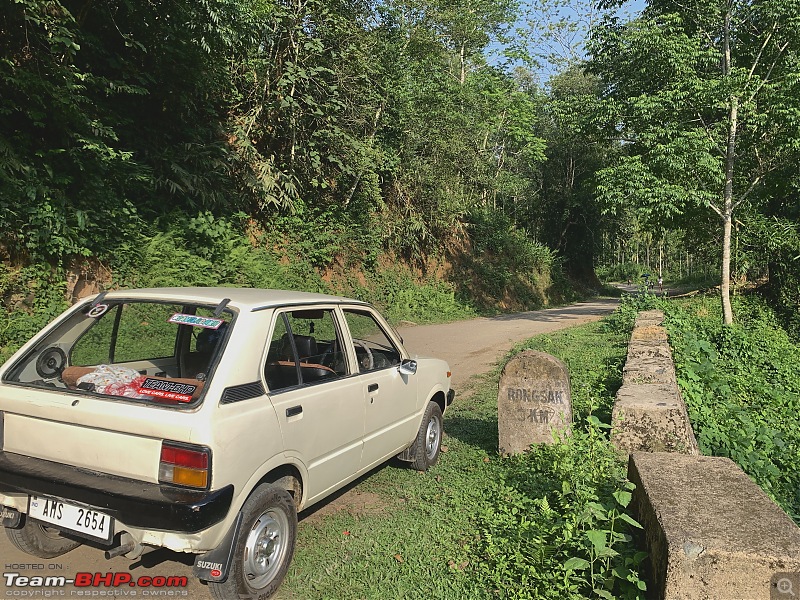 Rongsak 3 kms. Not too far from Bangladesh.
Rongsak 3 kms. Not too far from Bangladesh. 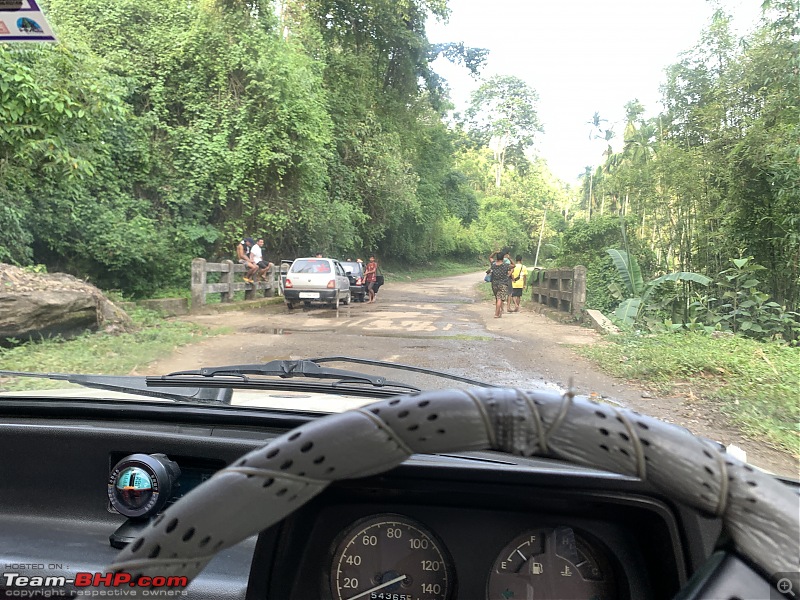 Welcome to the land of the m800s
Welcome to the land of the m800s 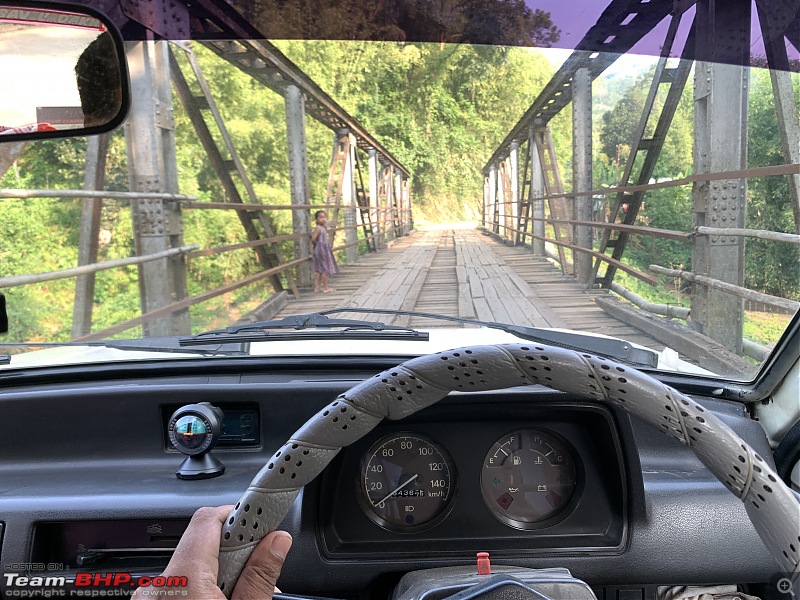 Samanda bridge. Roads become butter smooth from here.
Samanda bridge. Roads become butter smooth from here.
Found a restaurant finally at about 4 pm. All four cars arrived. After some surprisingly delicious noodles, I moved ahead for a fuel refill at Rongjeng, while also trying to cover as much distance as is possible before it gets dark.
A gypsy now appeared on my IRVM. I don’t know about the gypsy but Hirohito was definitely on full throttle for the next ten minutes or so, nearing 3 digit speeds. With Rongjeng another 15 kms, I slowed down near a trijunction looking at the IRVM. But the gypsy parted ways and took a right while I had to take a left. With the forest and no cars, just the two white Kei cars from the 80s, I was briefly teleported into a different era.
At around 6.10 pm, I pulled over after crossing Rongjeng to check on the rest of the team. They were right behind me, so I decided to keep going.
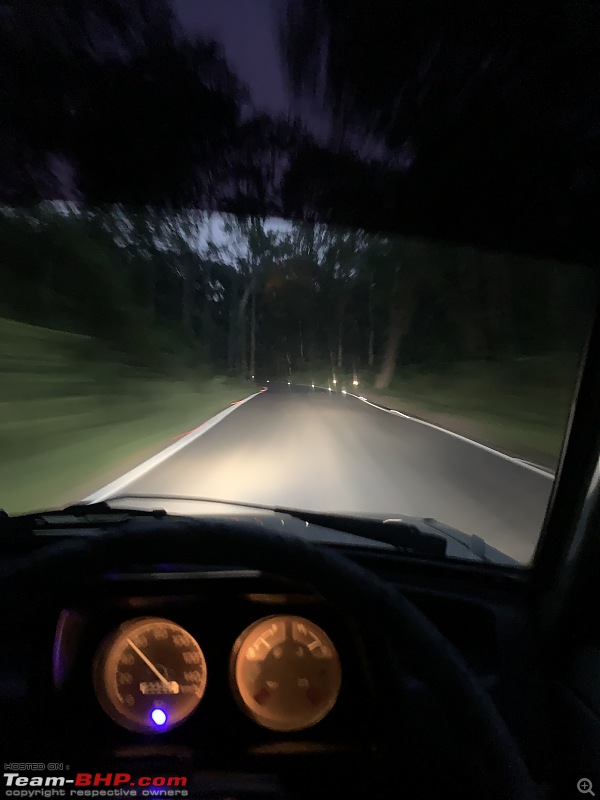 Closer home. The windshield swirls notwithstanding, I can manage driving on this familiar highway in the dark. Home at 54480. Total distance travelled, 276 kms
Closer home. The windshield swirls notwithstanding, I can manage driving on this familiar highway in the dark. Home at 54480. Total distance travelled, 276 kms 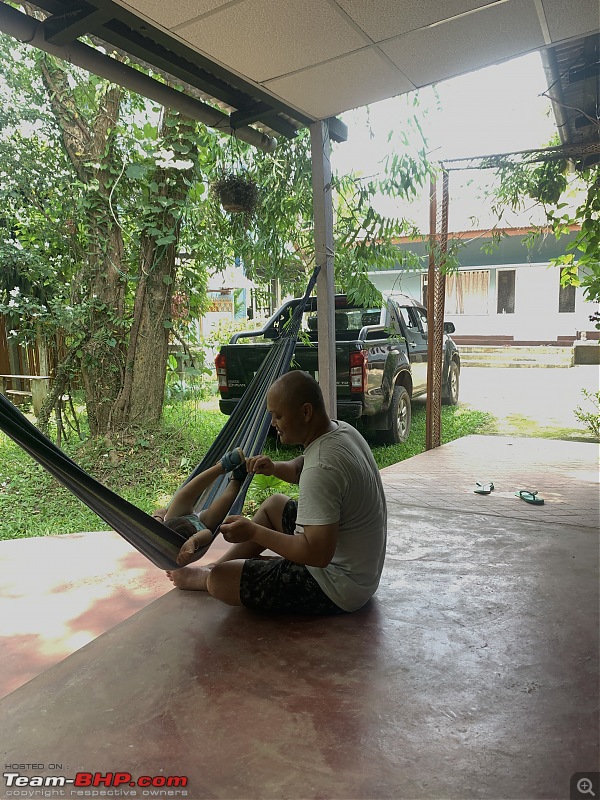 Abinash in the Isuzu with kid and wife decided to make a night halt at my place, since it was another 100 kms to Guwahati. He will be the last one to reach home.
Abinash in the Isuzu with kid and wife decided to make a night halt at my place, since it was another 100 kms to Guwahati. He will be the last one to reach home. (29)
Thanks
(29)
Thanks

 (2)
Thanks
(2)
Thanks
 (2)
Thanks
(2)
Thanks
 (2)
Thanks
(2)
Thanks
 (1)
Thanks
(1)
Thanks
 (1)
Thanks
(1)
Thanks
 (2)
Thanks
(2)
Thanks
 (4)
Thanks
(4)
Thanks
 (1)
Thanks
(1)
Thanks
 (1)
Thanks
(1)
Thanks
 (3)
Thanks
(3)
Thanks





































